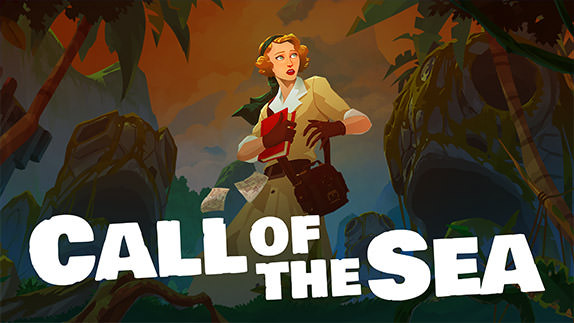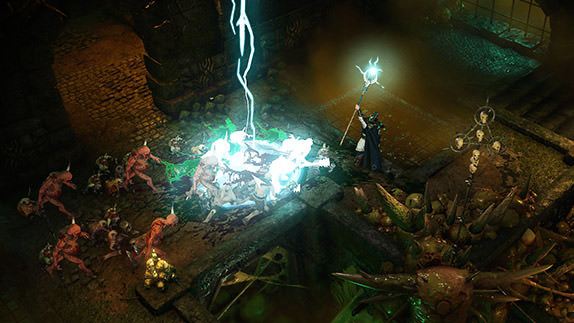Darksiders III Review

 By Kevin Mitchell
Posted on November 26, 2018
By Kevin Mitchell
Posted on November 26, 2018
Each title in the Darksiders series has taken inspiration from other game series. While the original Darksiders took clear inspiration from The Legend of Zelda, some even coined the phrase “mature Zelda-clone,” Darksiders II added an expansive loot system more akin to Diablo and other loot-focused action role-playing games. Darksiders III feels more akin to a Metroid title merged with elements from a Dark Souls title, but at its core still feels similar to the original game (without as many puzzles). As a member of the Four Horsemen of the Apocalypse, the angry and self-centered Fury, you hunt down the now escaped Seven Deadly Sins. Fury must venture across the ravaged remnants of Earth and defeat these creatures to further advance her her own ambitions. Without dedicated dungeons or mini-map, the environments in the game tend to flow into each other, but that is not necessarily a bad thing.
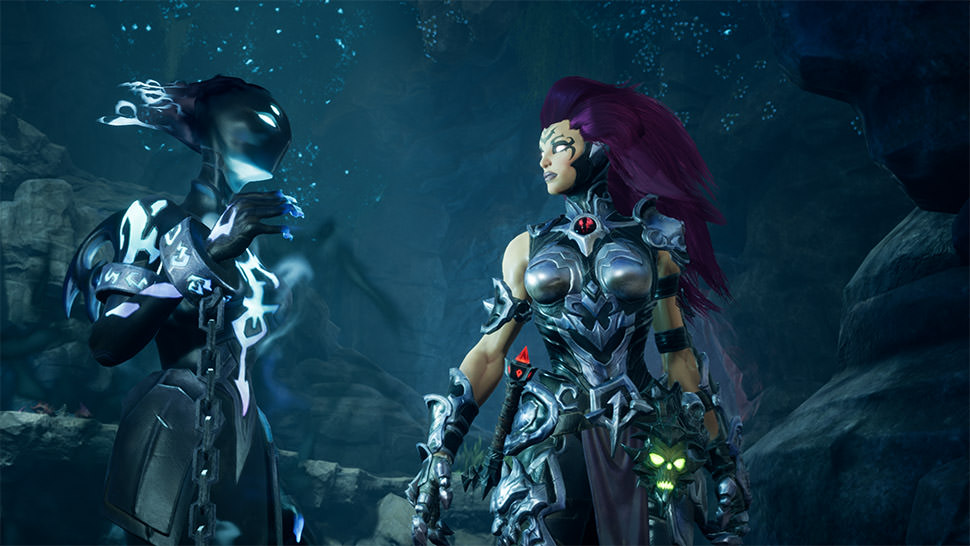
Darksiders III has abandoned the action RPG loot system from Darksiders II and instead feels more like the original title, focusing on getting new equipment through narrative progression. Consumables, crafting ingredients, enhancements, and crystals are the only things that you’ll pick up strewn throughout the wasteland and from fallen enemies. The glowing ember-like appearance of the items is very reminiscent of the Dark Souls franchise, especially since the game has many aspects in common. Crystals come in various forms, either providing additional attribute points to further increase Fury’s stats or lurcher clumps/clusters that contain a set amount of souls once shattered. Ulthane (Black Hammer), a Maker, who appeared in the first game, makes his return, improving your weapons in exchange for adamantine fragments. He can also enhance your socketed gems using artifacts (demonic or angelic), giving you two different paths to choose from depending on your preference. Each of your weapons can socket a single gem that you find during your adventure. For example, the Unfocused Chaos gem returns a percentage of dealt damage to you as health and boasts its effectiveness further during havoc mode.
The heart and soul of Darksiders III revolves around the four Hollows that you’ll acquire, serving more than just secondary weapons. The chains of Scorn, for example, grants Fury with the power of fire, setting her hair ablaze with a fiery orange glow, and letting her freely walk through lava without succumbing to the scorching heat. Although your range is limited when using the chains, they make up for it with speed, whereas the Lance of Scorn (lightning element) is slower, but has a lunging attack for closing the gap with your foes. Each one also grants additional traversal options, based on the specific element at hand. The world you explore feels largely interconnected, as new areas open up with each new traversal option you gain. However, at the same time, it makes fast traveling hit-or-miss as you don’t know exactly where you are going to wind up in relation to where the next boss/area is located. The compass does an acceptable job at pointing you towards your next objective (namely the location of the subsequent boss), but I still miss being able to see which areas remained unexplored. However, you’ll be hard pressed to miss any of the hidden passageways and branching paths, as they stand out quite well.
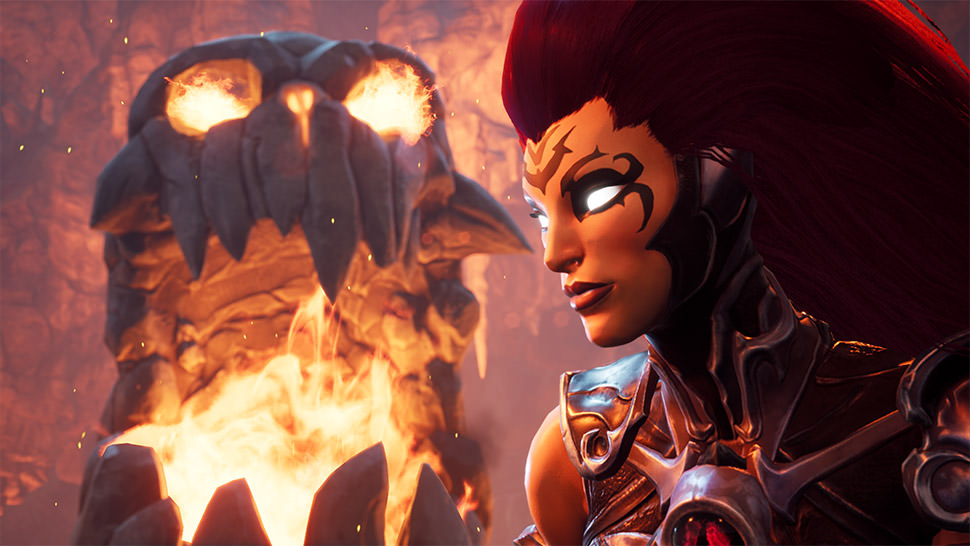
Souls can be spent on not only consumables but to increase the level of three key stat categories for Fury: health, strength, arcane. Both strength and arcane relates to your damage output, adding a percentage bonus to both physical and arcane damage. Physical damage is dealt through your basic attacks using your primary and secondary weapons, while arcane damage is dealt on evade counters, charged attacks, wrath attacks and when you transform into your havoc form. As you attack and defeat your enemies, you’ll fill both your havoc and wrath meter. Wrath form increases Fury’s offensive prowess, while havoc form transforms her into a larger than life fiery beast, unleashing the full fury (pun-intended) of the Horsemen.
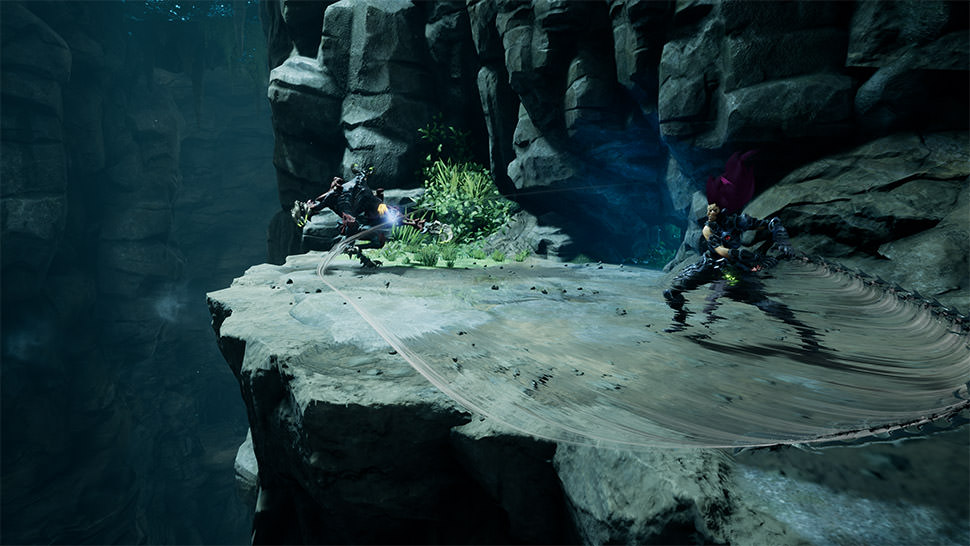
Consumables can be quickly sorted through using the direction pad (left and right) and used with a press of a button, however, there is an animation involved, so you’ll have to have a spare (and safe) second to use them. These shards can assist you in various ways, either providing healing, replenishing your wrath, boosting your strength, and more. Instead of collecting the life energy from fallen enemies directly like in the first game (the floating green skulls), it is absorbed by the Nephilim’s Respite flask. A gift crafted by Death, it allows Fury to heal once recharged, however, it is upgradeable; increasing its capacity and healing power.While the game does include three different save game slots, there is no way to save the game manually. Instead, you are forced to rely on the autosave functionality. This could mean you are going to have to replay certain sections or traverse a few rooms to return where you left off, especially during boss encounters. It's not always an issue, but there are a couple of frustrating sections. You’ll have to juggle with the notion of killing freshly respawned foes, which take additional time to fight or sprinting past them. Upon death, you’ll drop any souls that you haven’t banked, but the game is less harsh with punishments. Even if you die again, the souls won’t disappear, and can easily be reacquired.
Simply Put
The well-designed and vibrant post-apocalyptic world of Darksiders III is simply a joy to traverse. The narrative is well-written, and the boss encounters, including the interactions between characters, before, during, and after encounters are quite enjoyable. Although the game takes its inspiration from new titles and genres, it still feels like it belongs in the series I’ve been playing for the past eight years. On the technical front, the game suffers from occasional hitching and slowdown, even on an Xbox One X.
Note: Darksiders III was reviewed on Xbox One. A digital copy of the game was provided by the publisher/developer.


